This section contains information relating to our associations' professional annual meetings. These meetings are vital not only for the financial health of our organizations, but they also represent great opportunities for all of us to gain new skills, to share academic or research interests, and to acquire continuing education hours for certification.
We continue to expand this section to include recent manufacturer press releases and other noteworthy items of information for our JBC subscribers and Association members. Please let us know how we may improve this section, as well as other components of your Journal.
The JBC hopes that you will take advantage of these annual meetings and the opportunities they offer, and we encourage you to support your professional Associations.
Upcoming 2010 Meetings and Workshops 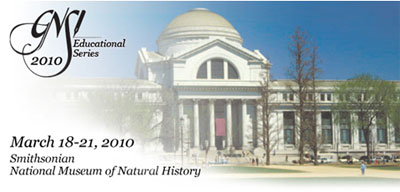
This special 4-day workshop will allow participants who are just starting to explore digital techniques to grow their skills using Adobe Photoshop and Adobe Illustrator. The workshop will begin with inspirational demonstrations using the tools available in both software programs, a discussion of their inherent differences, and the pros and cons to consider when deciding which platform will best suit your creative needs.
Each session will led by a professional digital illustrator whose goal is to help you, the participant, gain a fundamental understanding of the digital interface, become familiar with and comfortable using the various palettes and tools, and learn how to digitally enhance, manipulate and create your own artwork using the Adobe Illustrator and Photoshop platforms.
The workshop will utilize the National Museum of Natural History¹s Computer Lab for Learning equipped with 16 Dell PCs, a projection system, and wireless Internet access. (Arrangements for space and connectivity can also be made if you prefer to bring your own laptop.)
Registration and Fees
Workshop fee is $250 for GNSI members and $275 for non-members (registration is open to non-members starting February 12, 2010).
For additional information visit:
http://www.gnsi.org/whatwedo/educational-series/2010/2010edseries-about.html

You've never seen a training camp like this! Photoshop World is the ONLY Photoshop and digital photography conference designed to put you at the top of your game with fast and furious classes from the world's leading experts. Photoshop World is where Photoshop users go to learn hard and play even harder!
For additional information visit:
http://www.photoshopworld.com/
Boston, MA
June 2 – 6, 2010
Plan now to participate in Boston 2010 - Revolutionary Ideas in BioCommunications - the joint annual meeting of the BioCommunications Association, Association of Biomedical Communications Directors and the Health and Science Communications Association!
Below you will find the call for papers. Abstract submission deadline is January 15, 2010. Start thinking about the papers you would like to present in Boston next year and send in the form!
The meeting will be June 2-5, 2010 and hopefully followed by a full day photography workshop on Sunday June 6th. Headquarters for the meeting is the Radisson Hotel in Boston close to the Boston Commons, Public Gardens and the Theatre District!
We are excited to report that this will be a joint meeting of the Biomedical Communications Association (BCA), the Association of Biomedical Communications Directors (ABCD), and the Health and Sciences Communication Association (HeSCA).
For more information, please visit:
http://www.bioconf.org/

Annual Meeting
Boston, MA
June 2 – 5, 2010
The Annual Meeting of the ABCD will be held June 2-5, 2010 in Boston, MA. We are excited to report that this will be a joint meeting of the Association of Biomedical Communications Directors (ABCD), with the Biomedical Communications Association (BCA), and the Health and Sciences Communication Association (HeSCA).
For more information please visit:
http://www.bioconf.org/

Las Vegas Convention Center
Las Vegas, Nevada
Conference: June 5 - 11, 2010
Exhibition: June 9 - 11, 2010
At InfoComm 2010 — the most forward-looking pro-AV event in the world — you will find everything you need to advance your organization’s information communication goals and propel your business forward.
Technology
More than 900 exhibitors bring the show floor to life, showcasing the latest technologies and hottest products on the market. Find the right equipment and integrated systems for your organization. Talk directly to exhibitors about the best way to implement the next wave of pro-AV solutions.
Trends
From conferencing systems and connected classrooms to digital signage, smart rooms, sustainable practices and more, InfoComm uncovers trends driving the growth of the industry. Network with colleagues, collaborate with suppliers and take home valuable ideas that will enhance your working or learning environment.
Training
Information and innovation converge in a conference program featuring more than 300 expert-led sessions, labs and workshops. Learn new techniques and get up to speed on the latest applications and pro-AV opportunities.
For more information please visit:
http://www.infocommshow.org/infocomm2010/public/enter.aspx


Come visit the Mile High City for an exciting educational program sponsored by the Eye Imaging Experts. The OPS Rocky Mountain Mid-Year Educational Program is scheduled for June 18-19, 2010 at the Crowne Plaza Denver. The Crowne Plaza Denver is located at 1450 Glenarm Place in Denver Colorado, right off Interstate-25 and only 26 miles from the Denver International Airport. The hotel is within walking distance of many of Denver's hottest attractions, shopping, and businesses as well as Denver's local transportation bus and rail stations.
For additional information please visit:
http://www.opsweb.org/Educat/MidYear/index.html
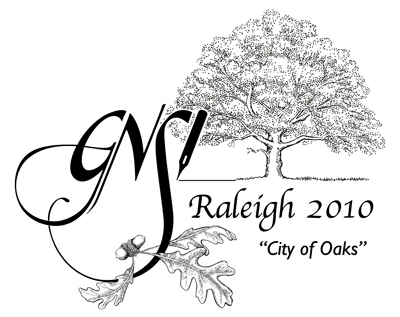
Come to the Guild of Natural Science Illustrators' Annual Conference to learn the latest information on the business, science, and techniques of natural science illustration. Three days of professional presentations are followed by three days of Technique Workshops and Field Trips to expand your knowledge and hone your skills. Portfolio sharing, the conference's Exhibit Reception, and the Membership Banquet allow for many opportunities to view and share artwork and build new friendships.
More information is available at:
www.gnsi.org
To be held on the Campus of Portland State University
Portland, Oregon
July 28 – 31, 2010
The 65th annual AMI meeting begins with one full day of workshops on Wednesday July 28, 2010, followed by the Salon Reception that evening. The meeting will take place at Portland State University. Three days of plenary and concurrent sessions (Thursday - Saturday) will cover topics including art and visualization, biomedical subjects, and business practices.
This year's theme, Branching Out - Always Growing, will highlight the cultivation of diversity and unity we bring to the profession of medical illustration.
Portland is located in a region rich in outdoor, cultural and family activities - the city and the region offer unique opportunities for education, exploration and fun.
Meeting program information will be made available soon at:
http://www.ami.org/
http://www.ami.org/annual-meeting/upcoming-meeting.html
The following links will provide additional information about the city itself, the attractions, Portland State University, the Hilton Portland & Executive Tower, and the PSU dormitory:
http://www.travelportland.com/
http://www.oregonzoo.org/
http://www.pdx.edu/
http://www1.hilton.com/en_US/hi/hotel/PDXPHHH-Hilton-Portland-Executive-Tower-Oregon/index.do
http://cegs.pdx.edu/stay/shc/accom.php
The theme for the 2010 Digital Video Expo in Pasadena will be “HD Content, Creation, and Distribution for the 21 Century.” Plan on attending the Expo.
Expo visitors will enjoy a centralized, engaging, and lively destination, featuring a world-class, pedestrian friendly entertainment district with over 500 restaurants, bars, theaters and an array of hotel options. Pasadena also has a rich TV and film production industry history, and will make for a safe and convenient destination for Digital Video Expo attendees and exhibitors.
For additional information later this year visit:
http://www.dvexpo.com/index_IP.php
(note: this is the 2009 site; 2010 site is in progress)


Chicago, Illinois U.S.A
October 15-19, 2010
For further information about the 2010 OPS Annual Meeting, please visit:
http://www.opsweb.org/index.html

Save the date for the Most Important Event in Photography this year.
Located at the Jacob Javits Center in New York City, the 2010 PHOTOPLUS will include a huge expo floor, hundreds of exhibitors, thousands of new products and a conference with over 100 seminars.
For additional information visit:
http://www.photoplusexpo.com/ppe/index.jsp

For additional information later this year visit:
http://www.photoexpowest.com/
|
|
 |
|
Related Association
News
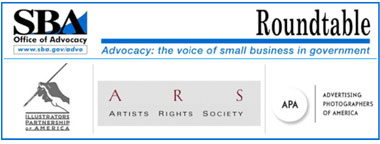
SBA Roundtable Web Cast Link
by Illustrators' Partnership of America
The web cast of the Orphan Works Roundtable is now available at:
http://videos.cmitnyc.com/asip.html
Orphan Works legislation currently before the U.S. Congress will
drastically change the way biocommunicators and others market and
manage their copyrighted images. Under this proposed legislation,
images that have been determined that to be “orphaned”
can be then be used by anyone, at anytime will little or no repercussion.
The Orphan Works Roundtable was held recently to openly discuss
this legislation, and the negative effect it would have on the illustration
community if it should pass.
The Orphan Works Roundtable has been described as:
"A Seminal Event"
"Unprecedented"
"The most effective advocacy in opposition to these bills I
have seen."
"The Gathering of the Tribes"
These were some of the comments we received from the recent Roundtable
Discussion on Orphan Works (held August 8, 2008), conducted by the
Small Business Administration. Artists, photographers, songwriters,
musicians, writers and spokesmen for collateral businesses all made
this the best attended Roundtable the SBA has ever conducted.
As one member of the audience said, perhaps the only good thing
about the Orphan Works bill is that it's brought so many creative
communities together. The full house is the best measure of the
concern creators have about this effort to undermine copyright law.
Here are some of the key points to emerge from the discussion:
- The high cost of digitizing and registering work with commercial
databases will make compliance impossible for most artists.
- This will cause billions of unregistered works to fall into
the public domain.
- To make money, commercial databases will have to promote and
facilitate infringement.
- Infringer-friendly databases will compete with artists for clients.
As one panelist summed up: this bill "will socialize costs
and privatize profits."
If you missed this important industry event, please watch it now
at your convenience. You may review the agenda, the panelists and
their biographies on the Illustrators' Partnership blog located
at:
http://ipaorphanworks.blogspot.com/2008/08/80808-sba-hearing-on-orphan-works.html
The Illustrators'
Partnership of America
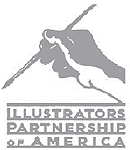
The Association of Medical Illustrators, in conjunction with The
Society of Illustrators, The National Cartoonists Society, The American
Society of Architectural Illustrators, and The Illustrators' Partnership
of America, continues to seek better ways to market and license
the rights to their creative work.
One of the goals of this working coalition is still to explore
the possibility of collecting and pooling artists' reprographic
fees in order to create a collective rights administration to return
reproduction royalties to illustrators. Since the birth of the Illustrators'
Partnership of America, the organization's key mission has been
the development of a licensing agency that would truly represent
the best interests of American artists and illustrators.
For more information about the Illustrators' Partnership of America,
visit the IPA Website at http://www.illustratorspartnership.org/
For information about protecting your copyrights:
http://www.copyright.com/
http://www.ifrro.org/
http://www.copyright.gov/
http://www.copyright.gov/circs/circ1.html
Proposed Legislation
Could Orphan Copyrights
On January 23, 2006 the U.S. Copyright Office issued their
Orphan Works Report, outlining their recommendations to Congress
for changes to the 1976 Copyright Act. While we know the Copyright
Office made a sincere effort to solve the problem of copyright availability
for users, we believe these proposed changes will undermine copyright
protections for artists.
The report defines an "orphan work" as any work where
the author is unidentifiable or unlocatable, regardless of the age
of the work. It extends to both published and unpublished works, and includes both U.S. and foreign works. At 127
pages, the report is too long to analyze in detail here, but you
can access it at the Copyright Office website. For those who wish
to cut to the chase, the explicit language for their proposed changes
can be found on page 127.
http://www.copyright.gov/orphan/orphan-report-full.pdf
To understand the effect these changes may have, consider what the
1976 Act currently guarantees to you. It guarantees that you have
the exclusive right to authorize or withhold reproduction of your work and to create derivative works. It guarantees
this from the moment you fix the work in a tangible form, and it guarantees
this without imposing formalities such as a copyright mark or registration. The Berne Convention for the Protection of Literary
and Artistic Works forbids such formalities as a condition on the
enjoyment and exercise of copyright. The U.S. formally acceded to
Berne in 1988.
Placing Relevant
Information on Your Work
The legislation proposed by the Orphan Works Study would
not officially return artists to pre-Berne status, but for
practical purposes, it would have that effect. It would not require
you to mark each picture with a copyright notice and your
name. But failure to do so on your part (or your publishers') could
be used by infringers to justify their own use of your work. Here's
the relevant part of the Copyright Office's explanation:
"For authors and copyright owners, marking copies of
their works with identifying information is likely the most significant
step they can take to avoid the work falling into the orphan works
category. This is particularly true for works of visual art,
like photographs and illustrations, that otherwise do not contain
text or other information that a user can rely on to help determine
the identity of the copyright owner. Nothing in the Office's
recommendation would make such markings mandatory . . . Nevertheless,
the presence and quality of the information on particular copies
will be a highly relevant fact as to whether a reasonable search
will find the copyright owner." (p. 9, emphasis
added)
In other words, the "information" that has been placed
on your work will be a "highly relevant fact" in determining
- for legal purposes - whether a user
has made a "reasonable search" to find you before he or
she uses your work. But since the report doesn't set objective standards
for what constitutes a "reasonable search," it paves the
way for endless ambiguity. What do you do if a user infringes your
work after what he regards as a reasonable effort to find you? What
if someone simply uses your work on the grounds that you may not
find out about it, and if you do, justifies his actions by citing
the "fact" that your work lacked "relevant information?"
No Penalties For Infringing Orphan Work
Those who have demanded this legislation have argued that
users should not be subject to penalties for infringing
orphan work. They say that the public should be encouraged to use
this work and that penalties would discourage use. The Copyright
Office has agreed:
"Our recommendation follows this suggestion by limiting
the possible monetary relief in these cases to only 'reasonable
compensation' which is intended to represent the amount the user
would have paid to the owner had they engaged in negotiations
before the infringing use commenced." (p. 12)
In other words, if someone infringes your work because they couldn't
find you - and you come forward to claim authorship - this system
would only require the infringer to pay you the fee they presume
you would have "negotiated." Yet if someone has already
published your work - and faces no risk for statutory damages, attorneys‚
fees and court costs, they'll be in a better position than you to
dictate what constitutes a "reasonable" fee. And unless
you can work with the fee they offer, you'll have no choice but
to take the issue to court, knowing that the cost of litigation
could well exceed whatever "reasonable compensation" the
courts might determine.
By considering and rejecting remedies for infringement, the Copyright
Office acknowledged the complaints by creators‚ groups that
individual authors generally lack the resources to police unauthorized
usage:
"While corporate copyright owners were generally in favor
of a reasonable compensation approach, individual authors like
photographers, illustrators and graphic artists noted that under
current conditions, obtaining a lawyer to even file an infringement
case is prohibitively expensive, so much so that only where statutory
damages are available is it possible to file a case. If compensation
were limited to only a reasonable royalty, they fear that it will
likewise be practically impossible even to recover that compensation
given the cost of litigation." ( p. 117)
But while the Report expresses "sympathy" for this fact
of life, it states that "[t]his problem . . . has existed for
some time and goes beyond the orphan works situation, extending
to all types of infringement of the works of individual authors
. . . It is not, however, within the province of this study
on orphan works." (p.114, emphasis added)
Yet if the problem is not within the province of the Orphan Works Study, we must introduce it into the coming debate over legislation. Otherwise, a law that exposes vast quantities
of copyrighted work to potential abuse could make the existing bad
situation worse, making payment for usage the option of last resort
for any user who chooses to exploit this glaring loophole.
Are Registries a Solution?
The Orphan Works Report notes that many respondents to
the Study proposed "registries or other databases of owner
or user information" as a possible solution of tracking rights
holders. A publicly available visual artists registry would
match unidentified art to an artist and/or the artist's contact
information. But creating a registry requires technology and staff
unavailable to independent artists. Other countries protect their
artists' exclusive rights through the administration of collecting
societies. The Orphan Works Report states that "such administrative
mechanisms might ultimately be of great assistance in helping put
owners and users of orphan works together" (p. 95), but says
the Copyright Office lacks the resources to create and administer
them:
"[W]e believe that registries are critically important, if not indispensable, to addressing the orphan works
problem, as we explain above. It is our view that such registries
are better developed in the private sector, and organically become
part of the reasonable search by users by creating incentives
for authors and owners to ensure that their information is included
in the relevant databases." (p.106, emphasis added)
But if Congress can’t allocate funds to create the kind of
registry that Orphan Works legislation would make "indispensable,"
Congress should not impose that burden on rights holders as a condition
of maintaining their copyrights. Especially since the effect
of these changes would be retroactive, that is, affecting
work created over the last 28 years, during which time artists did
work with the expectation that it would be protected - whether marked
and registered or not, for their lifetime plus 50 (now 70) years.
Specific Exemptions as a Solution
We believe most artists would agree with the Copyright
Office that an orphan works problem exists. Any of us who
have ever wanted to duplicate old family photos will understand
how troublesome (even futile) it can be to try tracking down a long-lost
photographer or other potential rights-holder. But if Congress concludes
that legislation is necessary to solve problems like this, we urge
them to craft specific, limited exemptions instead of sweeping legislation
that shifts the burden of diligence from users to copyright
holders.
A limited exemption could be crafted to solve family photo restoration
and reproduction issues without otherwise gutting photographers'
copyrights. Usage for genealogy research is probably already covered
by fair use, but could be specifically exempted if necessary. Limited
exemptions could be designed for documentary filmmakers as well.
Libraries and archives already have generous exemptions for their
not-for-profit missions, but if their missions are changing to include
for-profit ventures, they should abide by commercial standards for
the usage of copyrighted material.
The Next Step
In conducting this study, the Copyright Office identified
as the primary goal of Orphan Works legislation: "to make it
more likely that a user can find the relevant owner in the first
instance, and negotiate a voluntary agreement over permission and
payment, if appropriate, for the intended use of the work."
(p. 8) Yet we're afraid that this system as proposed will do little
to "bring users and authors together." In fact, it could
well force authors into the "marketplace" of the courts
to attempt recovery of compensation after their work has been used
and their copyrights compromised.
Last spring nearly 2,000 individual artists and 42 organizations
joined us in opposing Orphan Works legislation. We thank all of
you for your responses to our submission to the Study. Since then,
we've had several opportunities to express our opposition directly
to the Copyright Office. We participated in the government‚s
two-day Orphan Works roundtables last July 26 and 27, and at their
invitation, we met individually with Copyright Office attorneys
on November 17. Now we'll need to rally again to see that the proposals
in this study are not enacted into law. This will require a practical
strategy and a concerted effort. We'll keep you informed as this
develops, and we'll let you know how you can help.
Brad Holland and Cynthia Turner
for the Board of the Illustrators' Partnership of America
http://www.illustratorspartnership.org/
The Vesalius Trust
About The Vesalius Trust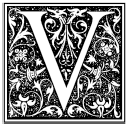
The Vesalius Trust for Visual Communication in the Health Sciences
was incorporated as a nonprofit public foundation in 1988. Established
under the direction of the Board of Governors of the Association of
Medical Illustrators, the Trust strives to develop and support education
and research programs in the field of health science communications.
History of the Trust
Since its founding in 1988, the Trust has endeavored to identify
and secure funding for educational and research activities in visual
communications in the health sciences, and to act as a conduit for
these resources. Currently, the Trust supports: scholarships, research
grants, continuing professional education, and an international
recognition program for exceptional contributions to medical education.
The Frank H. Netter, M.D. Award and Vesalius Trust Awards of Excellence
recognize and honor significant contributions to the field of health
science communications.
Mission of the Trust
To provide leadership for the advancement of education and research
in visual communications for the health sciences.
Vision Statement
To be known as the premier resource for funding of visual communications
in the health sciences.
Our Commitment
Our commitment to support visual communications in the health sciences
is broad. During the past year, the Trust has endeavored to form
alliances with related groups and associations within the field
of biocommunication. The Trust not only supports scholarship and
research in the profession of medical illustration, but also includes
and supports the areas of biomedical and scientific photography,
biomedical visualization, anatomical animation, life science and
zoological illustration, microbiological and molecular visualization,
video production, and biomedical research.
Contributions
We welcome financial contributions of any size from individuals
or corporations interested in the Trust's mission. Those individuals
interested in making a tax deductible contribution to the Vesalius
Trust are encouraged to visit the Trust's website below.
E-mail inquiries regarding the Vesalius Trust are also encouraged
at: Vesaliustrust@aol.com
Please visit The Vesalius Trust's web site for additional information:
http://www.vesaliustrust.org |
